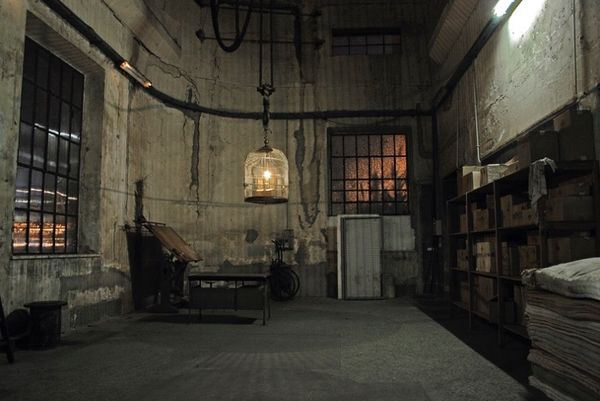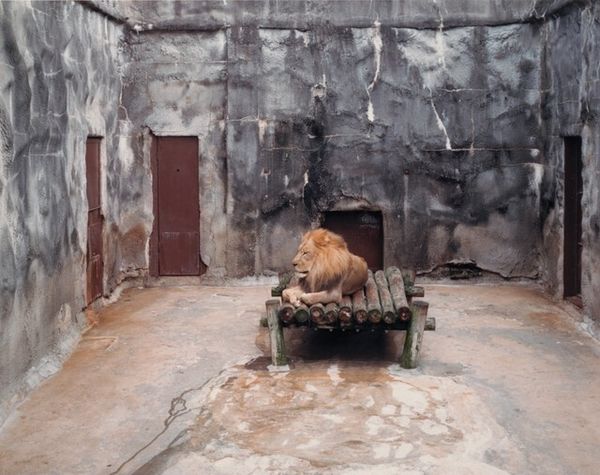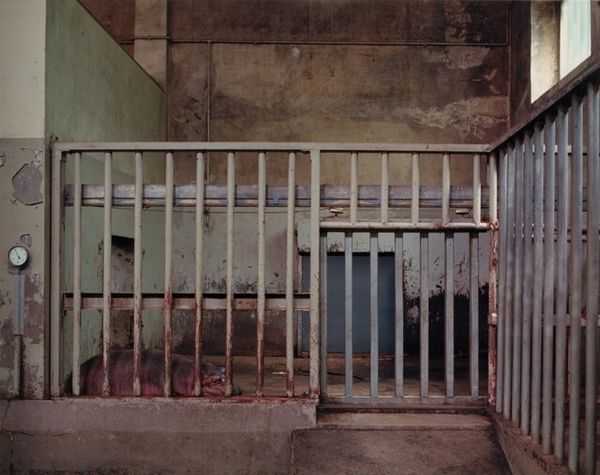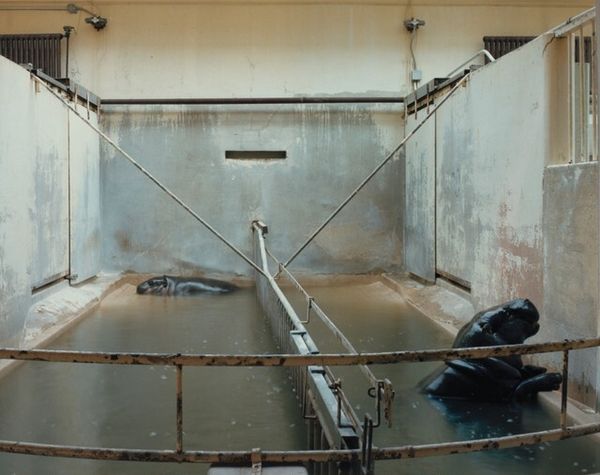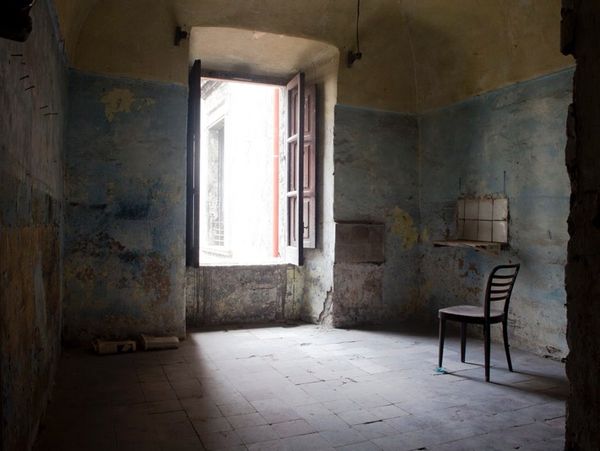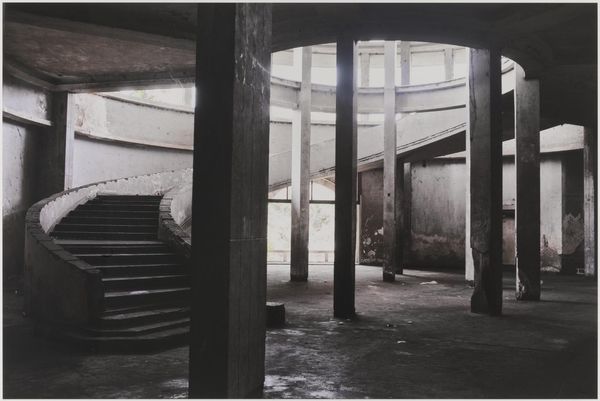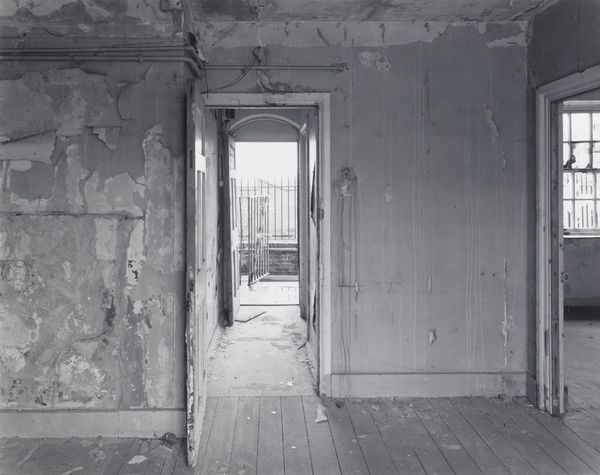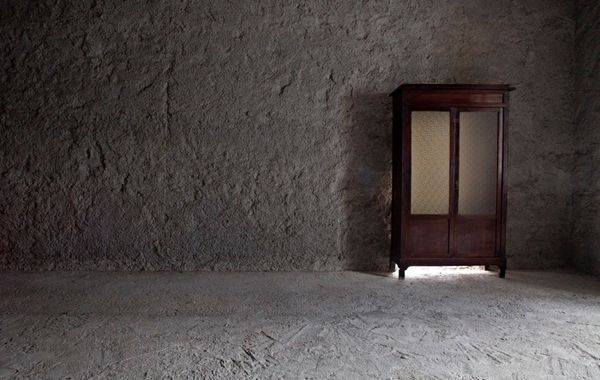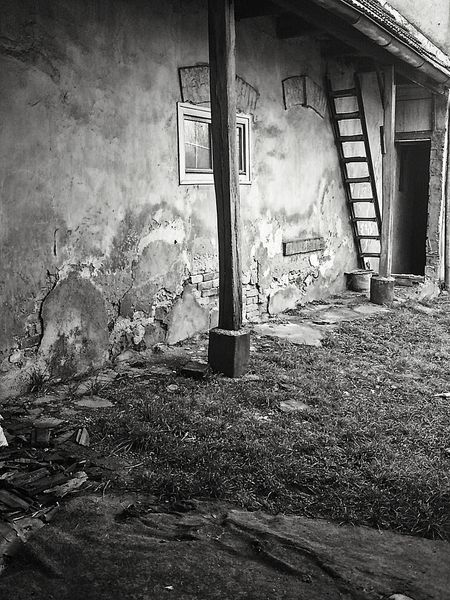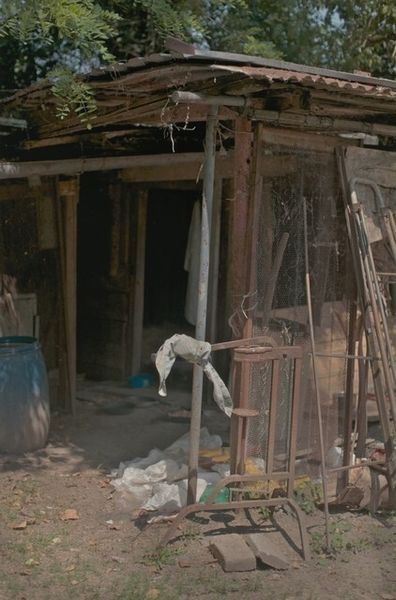
Spazi. Spazio #01 (The considerations on the intentions of my first communion remain a dead letter) 2009
0:00
0:00
#
public art
#
urban
#
abandoned
#
building site documentary shot
#
sculpture
#
street art
#
derelict
#
street graffiti
#
urban art
#
ruin
Copyright: Gian Maria Tosatti,Fair Use
Curator: This image documents "Spazi. Spazio #01 (The considerations on the intentions of my first communion remain a dead letter)" created in 2009 by Gian Maria Tosatti. It presents what appears to be an abandoned interior space. Editor: The overall impression is somber, isn't it? The palette is strictly monochromatic, heavy on the grays. The lines are rough and there’s a strong textural contrast between the decaying plaster and those rusted metal objects. A stark visual field. Curator: Absolutely. Tosatti frequently uses derelict spaces to create site-specific installations. Here, he’s focusing on the narrative of urban decay, the spaces left behind by social and economic shifts. Notice the vestiges of domesticity – a crumbling fireplace, a discarded bed frame. Editor: The fireplace indeed feels like a dark void, like some perverse mirror, set off against the metallic geometry of the bedframe almost propped up like a visual pun—structure versus chaos. Is he pointing to an intrinsic tension between form and entropy? Curator: That contrast is compelling. He’s creating a dialogue between the built environment and its gradual collapse, perhaps symbolizing the ephemerality of human intention, reflected in the rather provocative title. Consider how these spaces, once filled with personal narratives, become sites of collective amnesia. Editor: So, the title almost acts as a textual intervention then. Juxtaposing the intimate nature of the first communion, something deeply personal, with a setting marked by abandonment and forgetfulness is deeply ironic. Curator: Precisely. It speaks to a rupture between personal belief systems and the socio-political realities that surround them. The objects, then, act as allegories, representing not just material decay but also a kind of spiritual disillusionment. The ruined setting becomes a stage. Editor: The spatial composition contributes to this sense of isolation. The eye is directed up, emphasizing the height of the room and the limited light. The enclosed nature of the space exacerbates that sense of suffocation, almost trapping the gaze of the viewer inside. It creates an immersive experience of hopelessness and decay. Curator: I agree entirely. The artist is engaging with the spatial syntax to evoke emotional resonances, inviting us to reflect on the intersection between history, memory, and material existence. It certainly challenges our assumptions about what art in public spaces can be. Editor: It seems we are left, as interpreters, contemplating fragments and questioning what it truly means to consecrate space with our beliefs. A starkly beautiful meditation on transience.
Comments
No comments
Be the first to comment and join the conversation on the ultimate creative platform.


